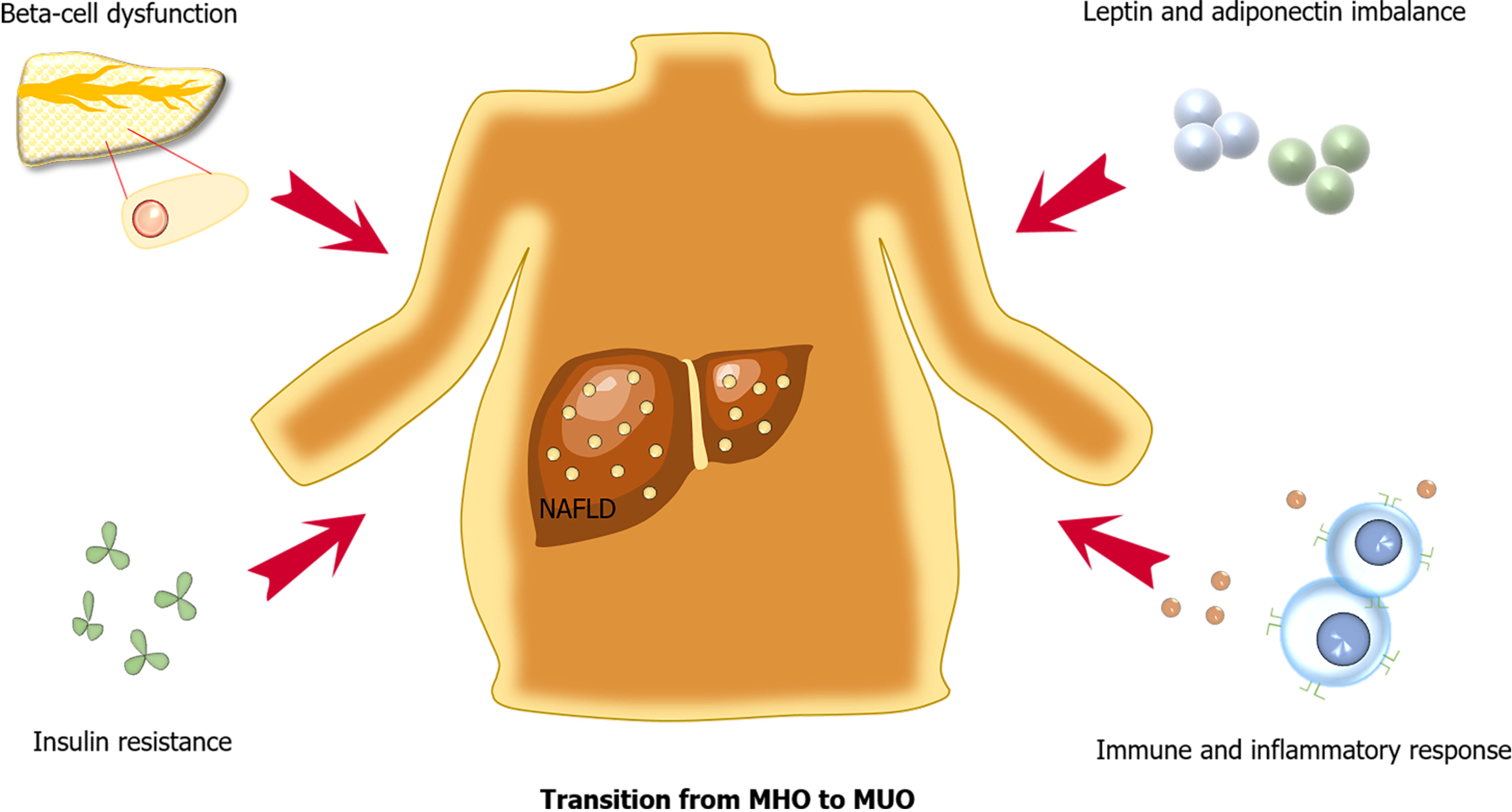Copyright
©The Author(s) 2022.
World J Diabetes. Feb 15, 2022; 13(2): 70-84
Published online Feb 15, 2022. doi: 10.4239/wjd.v13.i2.70
Published online Feb 15, 2022. doi: 10.4239/wjd.v13.i2.70
Figure 1 Possible mechanisms that contribute to the future incidence of type 2 diabetes mellitus in the transition from metabolically healthy obesity to metabolically unhealthy obesity.
The presence of non-alcoholic fatty liver disease in metabolically healthy obesity is crucial to the incidence of type 2 diabetes mellitus. The possible mechanisms underlying the future development of type 2 diabetes mellitus in metabolically healthy obesity include beta-cell dysfunction, insulin resistance with impaired insulin action, adiponectin concentration reduction, as well as a chronic low-grade inflammatory status. MHO: Metabolically healthy obesity; MUO: Metabolically unhealthy obesity; NAFLD: Non-alcoholic fatty liver disease.
- Citation: Wu Q, Xia MF, Gao X. Metabolically healthy obesity: Is it really healthy for type 2 diabetes mellitus? World J Diabetes 2022; 13(2): 70-84
- URL: https://www.wjgnet.com/1948-9358/full/v13/i2/70.htm
- DOI: https://dx.doi.org/10.4239/wjd.v13.i2.70









